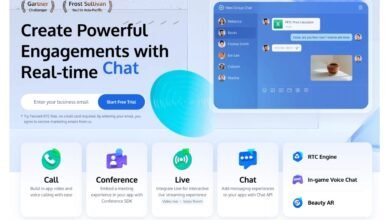The Future of Free Ad-supported Streaming TV

As the landscape of television continues to evolve, a new player has emerged that is reshaping how audiences consume content: Free Ad-supported Streaming TV (FAST). This burgeoning model allows viewers to access a wide array of programming without the burden of subscription fees, relying instead on advertising revenue. As more platforms embrace this model, understanding the implications and dynamics of FAST 101 becomes crucial for industry stakeholders and consumers alike.
The Emergence of FAST
The concept of ad-supported television is not new; traditional broadcast and cable channels have utilized this revenue model for decades. However, the rise of digital streaming has breathed new life into the format. As consumers pivot away from traditional cable subscriptions—often referred to as “cord-cutting”—the demand for more accessible and diverse content options has skyrocketed.
FAST channels aim to fill this gap by providing viewers with a TV-like experience on streaming platforms. By offering a mix of live channels and on-demand content, FAST services mimic the familiar cable experience while eliminating the cost barrier. Platforms like Pluto TV, Tubi, and Roku Channel have seen significant growth, leading the charge in this evolving sector.
Why Viewers are Embracing FAST
One of the primary reasons for the rapid success of FAST is the growing aversion to subscription fatigue. Consumers are becoming increasingly selective about their spending, often overwhelmed by the sheer number of streaming services available. With monthly subscription fees adding up, viewers are searching for cost-effective alternatives that do not compromise on content diversity.
FAST platforms offer just that. By providing access to a wide range of programming—ranging from classic television shows and movies to niche-specific content—FAST services cater to a diverse audience. More importantly, the absence of subscription fees makes these services appealing to younger viewers who may not have the disposable income to commit to multiple streaming platforms.
The Content Landscape of FAST
An enticing aspect of FAST is the variety of content available. Many FAST platforms partner with established networks and studios to provide a robust library of programming. This includes everything from reality TV and documentaries to sports and news. As more content providers recognize the value of reaching audiences through ad-supported models, the range of options continues to expand.
Moreover, FAST channels often curate their offerings to target specific demographic groups. For example, channels dedicated to classic films, anime, or even niche hobbies can create a tailored viewing experience that enhances audience engagement. This targeted approach not only attracts dedicated viewers but also provides advertisers with valuable insights into consumer preferences.
Advertiser Opportunities in FAST
For advertisers, the rise of FAST represents a unique opportunity to reach audiences who are increasingly difficult to engage through traditional advertising channels. With ad-blockers proliferating and consumers becoming more selective about the brands they engage with, FAST offers a refreshing alternative by capturing viewers’ attention during their streaming experience.
FOR INFORMATIVE CONTENT VISIT.. : Christmas gifts
FAST platforms utilize data analytics to help advertisers optimize their campaigns, targeting specific demographics and interests. This level of precision can lead to more effective advertising, ensuring that brands reach their desired audiences without the oversaturation that often plagues other forms of content delivery.
Furthermore, the interactivity of digital platforms allows for innovative advertising strategies. Brands can explore partnerships with content creators for sponsored segments, product placements, and even interactive ad formats that engage viewers in new ways. This evolution of advertising in the FAST landscape presents a win-win scenario for both viewers and brands.
The Future of FAST: Challenges and Opportunities
While the future looks promising for FAST, several challenges must be addressed. One of the significant hurdles is the delicate balance between providing a free service and maintaining a quality user experience. Viewers may become frustrated if they feel bombarded by excessive advertisements or if the content quality declines in pursuit of ad revenue.
Moreover, as the FAST market becomes more competitive, platforms will need to differentiate themselves. This differentiation could come from exclusive partnerships, unique content offerings, or enhanced user interfaces that make the viewing experience seamless and enjoyable.
The technological infrastructure that supports FAST is also crucial for its future success. The integration of advanced algorithms, better user interfaces, and improved ad-targeting capabilities will be imperative to keep viewers engaged and satisfied. As the industry continues to innovate, the potential for growth is immense, particularly as technology evolves to create even richer viewing experiences.
The Global Expansion of FAST
The FAST model is not constrained to the United States; it has the potential to thrive globally. As internet access expands and mobile devices become ubiquitous, markets in Europe, Asia, and beyond are ripe for FAST platforms. In fact, some international players have already begun to emerge, offering unique content tailored to local preferences.
As the FAST phenomenon rolls out globally, it presents a unique opportunity for content creators to reach new audiences in previously untapped markets. In turn, this expansion could foster greater cultural exchange and the sharing of diverse narratives, enhancing the global television landscape.
The FAST model represents a significant shift in how consumers engage with content, paving the way for a more accessible and diverse streaming experience. By embracing this evolution, both viewers and advertisers can benefit from the opportunities that FAST presents. As we continue to explore this landscape, one thing is clear: the future of television is increasingly ad-supported, and FAST is at the forefront of this transformation.





